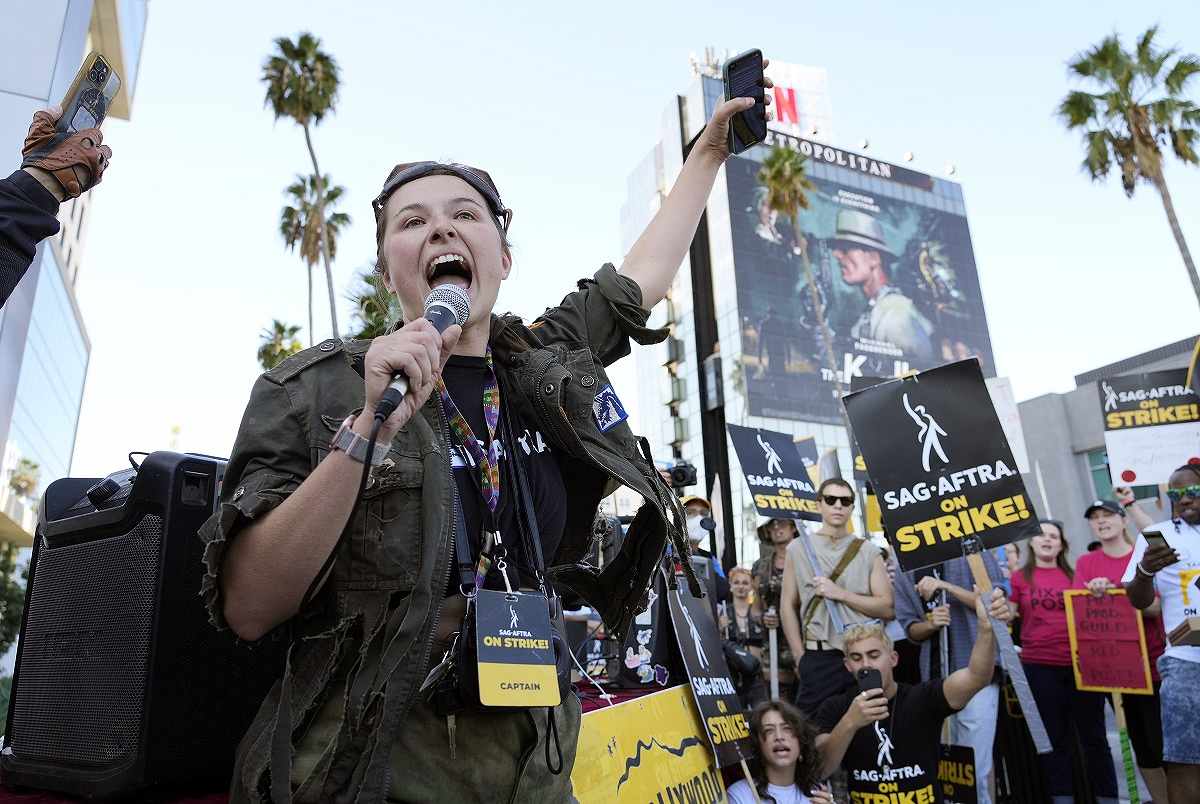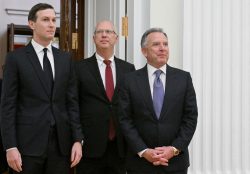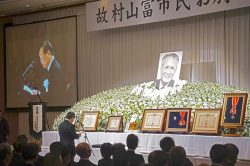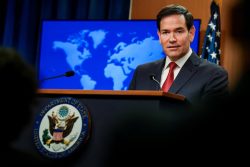From Hollywood to Auto Work, Organized Labor Is Flexing Its Muscles. Where Do Unions Stand Today?

captain Mary M. Flynn rallies fellow striking actors on a picket line outside Netflix studios, Wednesday, Nov. 8, 2023, in Los Angeles.
11:34 JST, November 10, 2023
NEW YORK (AP) — Once again, U.S. labor unions are flexing their muscles in the national spotlight.
In Hollywood, the actors union reached a tentative deal with major studios late Wednesday to end a months-long strike. Las Vegas hotel workers also scored breakthough agreements with Caesars Entertainment and MGM Resorts International this week — and last month, United Auto Workers celebrated victories on many of key demands that led to its six-week waves of walkouts against the Detroit Three.
But despite historic strikes and record contract deals seen this year, there’s a lot stacked against labor organizers today — particularly for those who aren’t part of larger, more established unions in sectors with stronger organizing roots. Union membership rates in the U.S. have also been falling for decades due to changes in the economy, employer opposition, growing political partisanship and persiting legal challenges.
“Even though we’re seeing stronger support for unions, (with) the highest popularity of union favorability in polls since at least the 1960s, translating the worker desire for representation into actual representation is really hard under our current system,” Alexander Colvin, dean of Cornell University’s School of Industrial and Labor Relations, previously told The Associated Press.
Still, some labor advocates see growing momentum. Here’s where things stand.
WHAT’S DRIVING UNION ACTIVITY NOW?
Across the U.S., hundreds of thousands of workers have participated in strikes this year. Labor activism has surged in tandem with soaring costs of living and rising inequality, particularly the growing pay gap between workers and top executives. Those inequities only became more glaring during the COVID-19 pandemic, particularly as some large coporations raked in record profits during sky-high inflation.
“It’s kind of a perfect storm, (so) you see a lot of union movement these days,” said Eunice Han, an assistant professor at the University of Utah specializing in labor economics.
The tightest U.S. labor market in decades is also giving workers leverage to challenge their employers.
The unemployment rate in the U.S. is close to 50-year lows and there are now about 1.5 open jobs for every unemployed person, according to recent government data.
Open jobs means American workers are quitting in higher numbers because they are confident of landing a better paying job. The unemployment rate 3.8%, further signaling leverage for workers.
Success or partial victories in high-profile union fights can also inspire organizing efforts across industries and different types of workers.
“One thing that’s really important is that solidarity still pays off,” said Adam Seth Litwin, associate professor in Cornell University’s School of Industrial and Labor Relations. “When you can actually see workers in other sectors benefiting from unionization, that’s incredibly powerful for organizers.”
Leaders of Screen Actors Guild-American Federation of Television and Radio Artists treated the actors strike as a watershed moment from the start, coming as it did amid wider labor fights across work sectors. Within the entertainment industry, that included the writers strike — marking the first time the two unions had been on strike together since 1960.
The simutaneous strikes “increased the power of both unions,” Litwin added — pointing to actors and writers supporting each other on picket lines.
The studios and Writers Guild of America reached a deal that brought their strike, which began two months prior to the actors’ work stoppage, to an end back in September. The writers union also applauded SAG-AFTRA’s tentative agreement Wednesday.
UNION RATES HAVE BEEN FALLING FOR DECADES. WHY?
While pickets lines seem to be everywhere this year, union membership rates have been declining for decades. Only 6% of U.S. private-sector workers belong to unions today, a sliver of the 35% that were union members in 1953.
Todd Vachon, an assistant professor in the Rutgers School of Management and Labor Relations, points to the post-World War II Taft-Hartley Act, which restricted the power of labor unions — as well as factors like relocating manufacturing jobs overseas and an uptick in anti-union stances from both employers and lawmakers that grew in the 70s and 80s.
Vachon notes one pivotal moment in particular, when President Ronald Reagan fired all striking air traffic controllers in 1981.
“That sent a really clear signal to the business community that it’s A-OK to be completely anti-union and to be so in a very belligerent way, because even the president of the United States is doing it,” he told The AP last month.
Separately, with the rise of the gig economy, some large companies have recategorized employees as “contractors,” making it harder for them to unionize. And growth in industries that haven’t had a strong history of union membership, such as technology, has also contributed to the decline in unionization.
Last year, the number of both public- and private-sector U.S. workers belonging to unions actually grew by 273,000, according to data from the Bureau of Labor Statistics. But the U.S. workforce grew at an even faster rate, meaning the percentage of those belonging to unions fell slightly.
WHAT LABOR LAWS IMPACT UNIONS TODAY?
The National Labor Relations Act of 1935 granted private-sector employees the right to unionize. A 1961 executive order from President John F. Kennedy allowed federal employees to organize. That came around the same era that states also began to pass labor laws for their own public workers.
Some states in the South and lower Midwest “will allow police and firefighters to collectively bargain, but not state employees. Or they’ll let state employees bargain, but they can only bargain over wages,” Vachon said. “That shows you how important the labor law is. It really sets the framework for which workers can either organize a union successfully or not.”
A handful of states also have “right to work” laws which, in unionized workplaces, require unions to represent everyone regardless of whether individuals choose to pay dues or formally join. Such legislation has been criticized for undermining the financial resources and bargaining power of unions.
Attitudes towards unionization have become increasingly partisan, too, and also divided geographically. Politically “blue” states tend to have higher unionization rates than “red” states. Several states have also dialed back on union protections in recent years, Han said.
MORE CHALLENGES ORGANIZING TODAY
Unionization efforts have expanded but many are taking place where there is little history of organized labor, creating a higher bar for workers.
Colvin points to Starbucks workers who have seen union drives clipped in the last year. Starbucks has been accused of chilling organization by closing unionized stores and firing pro-union workers.
There are also limits for organizers under current labor law. That means that what worked in auto workers’ labor campaign, for example, may not look the same or be possible in other industries. Larger, more established unions typically have more bargaining power — and that’s reflected in new contract wins seen today.
“We have a labor law that was designed in the era in the 30s and 40s, when auto plants of 10,000 workers (were organizing),” he said. Starbucks is “split into these small coffee shops of 15 workers. … They need to join together to have any kind of bargaining power against a big employer. But our labor law isn’t structured to help them do that,” Colvin said.
Service jobs can also be hard to organize due to part-time work and high turnover rates. The same can be said for Amazon warehouses, where there have been pushes for unions.
According to a Gallup poll, public approval of stronger unions now stands at 67%, down slightly from the 71% last year, but mirroring levels last seen in the 1960s. Creighton and others add that young people in particular are leading today’s charge.
But the desire to organize can only go so far without policy change, experts say.
“We’re absolutely at a turning point in people’s consciousness,” Vachon added. “Whether that translates into actual a change of direction for union density, I think, is going to depend a lot on how that consciousness plays out in the political arena.”
"News Services" POPULAR ARTICLE
-

American Playwright Jeremy O. Harris Arrested in Japan on Alleged Drug Smuggling
-

Japan’s Nikkei Stock Average as JGB Yields, Yen Rise on Rate-Hike Bets
-

Japan’s Nikkei Stock Average Licks Wounds after Selloff Sparked by BOJ Hike Bets (UPDATE 1)
-

Japan’s Nikkei Stock Average Buoyed by Stable Yen; SoftBank’s Slide Caps Gains (UPDATE 1)
-

Japanese Bond Yields Zoom, Stocks Slide as Rate Hike Looms
JN ACCESS RANKING
-

Keidanren Chairman Yoshinobu Tsutsui Visits Kashiwazaki-Kariwa Nuclear Power Plant; Inspects New Emergency Safety System
-

Imports of Rare Earths from China Facing Delays, May Be Caused by Deterioration of Japan-China Relations
-

University of Tokyo Professor Discusses Japanese Economic Security in Interview Ahead of Forum
-

Tokyo Economic Security Forum to Hold Inaugural Meeting Amid Tense Global Environment
-

Japan Pulls out of Vietnam Nuclear Project, Complicating Hanoi’s Power Plans


























